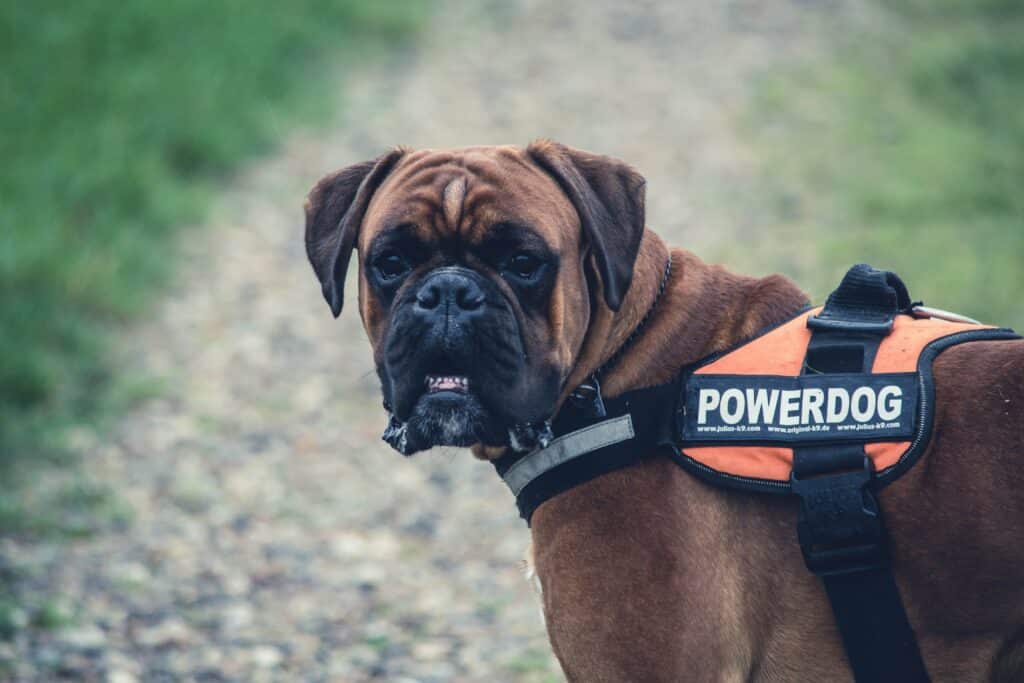
As a therapy dog trainer, I understand deeply the value that dogs bring to their owners. This is especially true for service dogs.
Unfortunately, these days there are those out there who disguise their pets (or emotional support animals) as service dogs. People do this to take their animal with them into places where pets usually aren’t allowed.
In this blog post, you will learn everything you need to know about telling the difference between a real and fake service dog.
Traits of a Real Service Dog
Real service dogs are highly trained to perform specific tasks for persons with disabilities. Under the Americans with Disabilities Act (ADA), these dogs perform various functions, such as:
- Guiding the blind
- Alerting deaf individuals
- Pulling a wheelchair
- Assisting during a seizure
Service dogs have good behavior in public, show no signs of aggression, and are focused solely on their handler.
3 Ways to Spot a Fake Service Dog
Here are some key signs that a pet is being disguised as a service dog:
- Poor Behavior: A genuine service dog maintains calm and order. If a dog shows signs of aggression, excessive barking, or is seeking attention from others, it’s a red flag.
- Lack of Focus on the Handler: Service dogs are trained to be attentive to their handler. A dog that is easily distracted or not following commands might not be a real service dog.
- No Task Performance: If it’s not apparent what task the dog has been trained to perform, and the handler cannot specify, it may indicate the dog is not a legitimate service dog.
Is It Legal to Ask for Proof of a Service Dog?
Business owners can legally ask:
- If the dog is a service animal required because of a disability
- What work or task the dog has been trained to perform.
However, they cannot ask for specific details about the person’s disability. They also can’t demand special identification or proof that the dog is a service animal.
The Detriment of Pretending Your Dog Is a Service Dog
Passing off a pet as a service animal poses a threat to the well-being of people with disabilities. They truly rely on these animals. It undermines public trust and can lead to more stringent regulations.
This makes life more challenging for those who genuinely need service dogs. Moreover, it disrespects the extensive service dog training and the bond between service dog owners and their animals.
As an advocate for both dogs as service animals and people with disabilities, I urge everyone to respect the integrity of service dogs. The Air Carrier Access Act and ADA have made significant strides in allowing people with disabilities to bring their service animals into public spaces. Let’s honor this progress by acknowledging the hard work of real service dogs and their handlers.
Leave a Reply